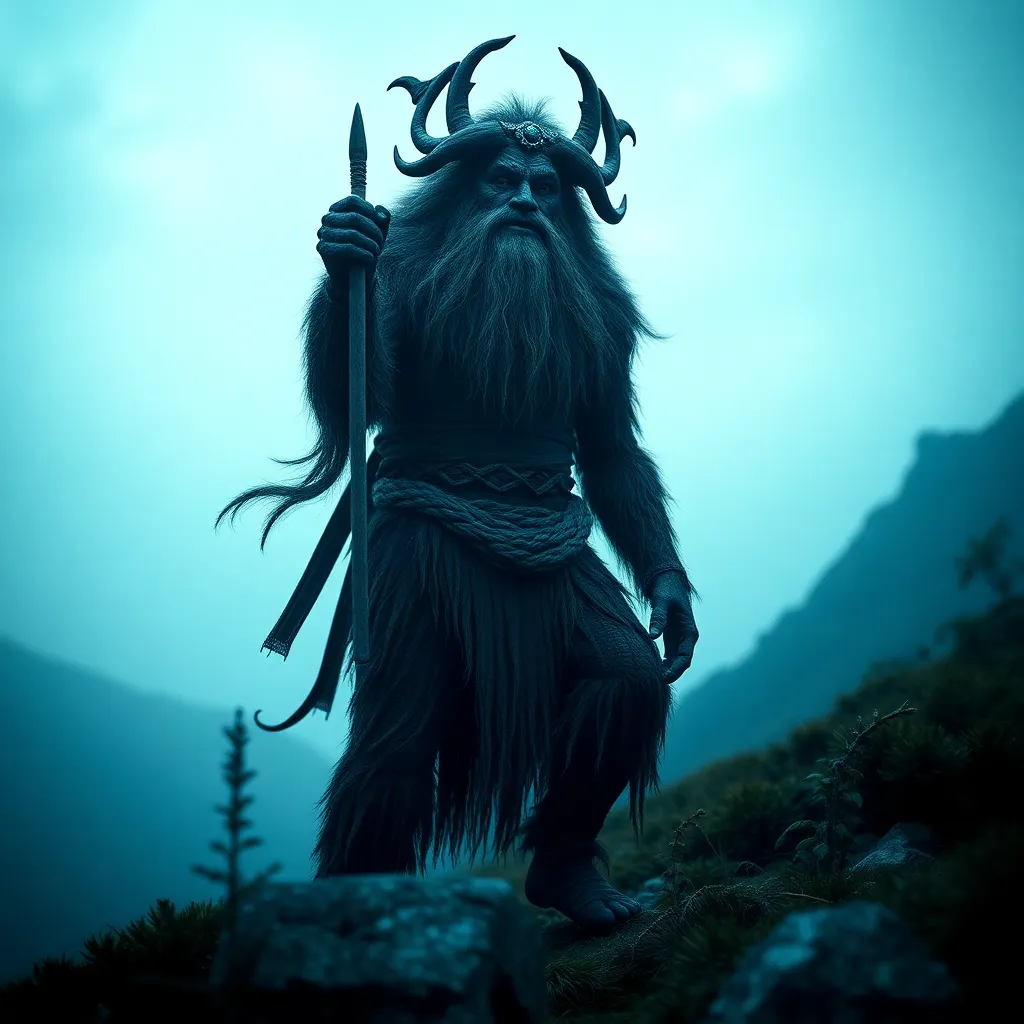Almasty: The Wild Man of the Caucasus Mountains
I. Introduction
The Almasty, often referred to as the Wild Man of the Caucasus, is a legendary creature deeply embedded in the folklore of the Caucasus Mountains. This enigmatic figure is said to be a humanoid being, resembling a primitive human, who roams the remote regions of the Caucasus. The Almasty legend has significant cultural implications, representing a connection to the natural world and humanity’s primal past.
This article aims to explore the Almasty legend in depth, examining its historical background, physical descriptions, cultural impact, scientific investigations, modern sightings, and the conservation of its potential habitat.
II. Historical Background
The origins of the Almasty legend can be traced back to various Caucasian folklore traditions. Local communities have shared stories of this elusive creature for centuries, often describing it as a wild, hairy humanoid that lives in the mountains. The name “Almasty” is derived from the local dialects and varies across regions, illustrating its deep-rooted presence in the culture.
Historical accounts and sightings of the Almasty have been recorded since the 19th century. Russian explorers and ethnographers documented encounters with what they believed to be the Almasty. Notably, these reports came from the mountainous areas of Chechnya, Ingushetia, and Ossetia.
When comparing the Almasty to other wild man legends around the world, such as Bigfoot in North America or the Yeti in the Himalayas, several similarities and differences emerge. Each of these legends reflects local cultural beliefs, fears, and the relationship between humans and nature.
III. Physical Description
Common characteristics attributed to the Almasty include a large, muscular build, a height often exceeding that of an average human, and a thick coat of hair covering its body. Witnesses have described the creature as having long arms, a flat nose, and deep-set eyes.
Variations in descriptions across different cultures can be notable. For instance, some narratives depict the Almasty as more ape-like, while others emphasize its human-like features. This diversity may be influenced by the local environment and cultural interpretations of the creature.
Theoretical biological origins of the Almasty have sparked discussions among scientists and folklorists. Some suggest that the Almasty could be a remnant population of early hominids, while others believe it might be a misidentification of known animals, such as bears or large primates. These theories raise intriguing implications about the evolution of humanity and our understanding of the natural world.
IV. Cultural Impact
The Almasty has played a significant role in local myths and stories, often serving as a symbol of the untamed wilderness. Folklore surrounding the Almasty often reflects themes of survival, the struggle between civilization and nature, and the mysteries of the unknown.
In literature and art, the Almasty has been depicted in various forms. Artists have portrayed the creature in paintings and sculptures, often emphasizing its primal nature and connection to the mountains. In contemporary media, the Almasty occasionally appears in documentaries and fictional works, highlighting its lasting influence on popular culture.
The Almasty’s role in the identity of the Caucasian people is profound. It embodies cultural heritage, a connection to ancestral stories, and a representation of the rugged landscape that shapes the lives of those in the region.
V. Scientific Investigations
Cryptozoology, the study of and search for animals whose existence is not substantiated by mainstream science, has taken an interest in the Almasty. Various expeditions have been launched to investigate sightings and collect evidence, such as hair samples and footprints.
Key expeditions, particularly in the late 20th century, aimed to uncover the truth behind the Almasty. Researchers traveled to remote areas, interviewing locals and documenting their findings. However, these efforts have often yielded ambiguous results, leading to skepticism from the broader scientific community.
The scientific perspective on the Almasty is largely one of skepticism. Many scientists argue that the lack of concrete evidence, coupled with the possibility of misidentification, suggests that the Almasty may be more myth than reality. However, the enduring fascination with the creature continues to inspire both researchers and enthusiasts.
VI. Modern Sightings and Reports
In recent years, there have been notable contemporary encounters with the Almasty. Reports from hikers and locals in the Caucasus Mountains have resurfaced, claiming to have seen or heard the creature. These accounts often describe strange noises, large footprints, and glimpses of a hairy figure in the distance.
Analysis of evidence and eyewitness accounts has proven challenging. While some photographs and videos have emerged, they often lack clarity or context, making it difficult to draw definitive conclusions. The advent of modern technology, including high-definition cameras and drones, has provided new opportunities for investigation, yet concrete proof of the Almasty’s existence remains elusive.
VII. Conservation and Habitat
The Caucasus Mountains are ecologically significant, housing diverse flora and fauna. This region is a UNESCO World Heritage site, recognized for its rich biodiversity and unique ecosystems. The potential habitat of the Almasty, if it exists, is likely intertwined with the conservation of this mountainous landscape.
Threats to the habitat of potential Almasty populations include deforestation, climate change, and human encroachment. As the natural environment is altered, the survival of numerous species, including the legendary Almasty, may be jeopardized.
Conservation efforts in the Caucasus are crucial not only for the preservation of wildlife but also for the cultural legacies tied to the region’s folklore. Protecting these landscapes ensures that stories of the Almasty and other mythical beings continue to be part of the local narrative.
VIII. Conclusion
The enduring mystery of the Almasty captivates the imagination, bridging the gap between myth and reality. As a symbol of humanity’s connection to nature, the Almasty reflects our fascination with the unknown and the stories that have shaped cultures throughout history.
This exploration of the Almasty serves as a reminder of the intricate relationship between folklore and the natural world. While the existence of the Almasty remains unproven, its cultural legacy endures, reminding us of the wilderness that lies beyond the boundaries of civilization.
In conclusion, the Almasty, the Wild Man of the Caucasus, is more than just a creature of legend; it represents the deep-rooted human yearning for connection with nature and the mysteries that surround us.



